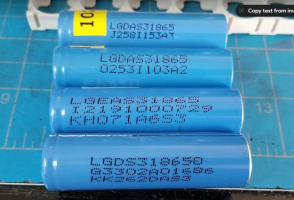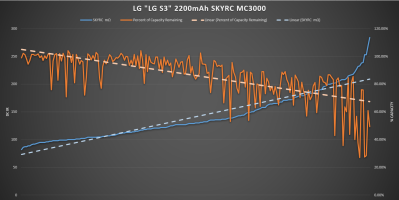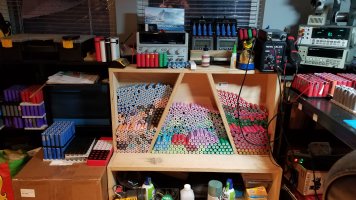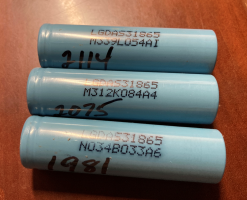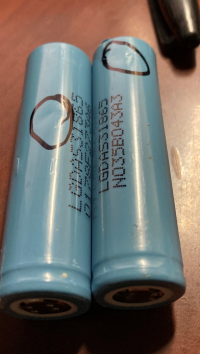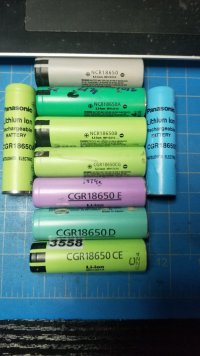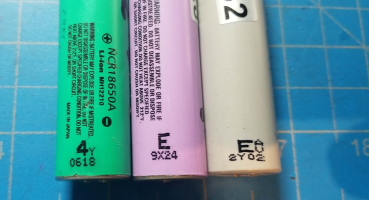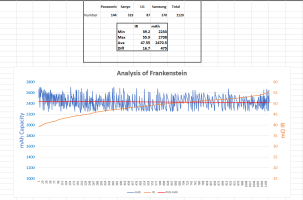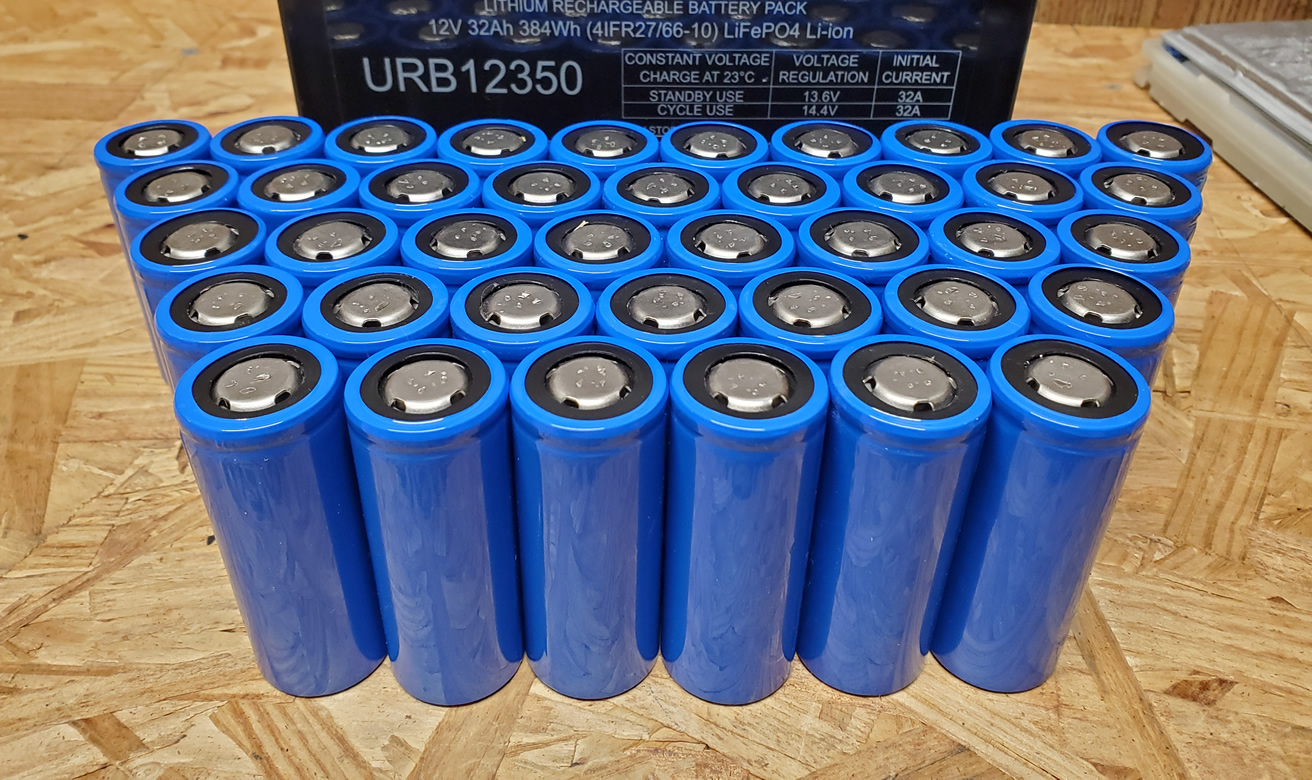Wolf
Moderator
- Joined
- Sep 25, 2018
- Messages
- 2,009
As we all are aware there are hundreds of millions if not billions of 18650 cells in all kinds of devices and there will continue to be a demand and supply of this form factor. Too many designs for this form factor would have to be changed, molds redesigned, BMS redeveloped, loads recalculated which all costs money.
I think the cylindrical Li-Ion cells are here to stay for quite some time. Just the scooter and power tool industries alone will continue to use them for the foreseeable future as they are compact and deliver substantial power for a reasonable cost.
As far as I am concerned till personal fusion generators become a reality we will be using some form of energy storage for quite some time.
Since I have finished my conservatively speaking ≈30kWh powerwall, and just waiting for the last lexan sides for the packs to finish hooking my 4th and last 14s80p battery to the build. Also this is not a high solar time of the year in the north east of the americas so I have delved back into cell study and analysis of the Li-Ion 18650 cell. I have gobs of leftover tested and untested cells, battery packs of all kinds medical, power tools and yea laptop packs.
I have stepped up my game as far as cell testing equipment with 2 Megacell chargers and 5 SKYRC MC3000 and one lonely OPUS just for sentimental reasons.
By the way the fan Mod on the OPUS is highly recommended if you are going to C/D/C cells at 1A. The cells will stay cool and the tester will not overheat causing it to pause during the cycle extending the test time.

The forum title is Li-ion cell recycling and testing procedures and I am posting this thread in this Forum to share some of my findings with you in hopes to help some of you with your harvesting endeavors.
As of this writing I have retested 544 of the original 6225 cells that I started with in Dec. 2018 and ran through Aug. 2019.
The first of hopefully many hints, tips and discoveries that I will share with you is cell markings. Now Samsung, LG, Panasonic, Sony, and Sanyo all have their product markings and date codes as they are the major players and those are the ones I will concentrate on. Today I will concentrate on the Sanyo as it has baffled me and many others. Most all Sanyo cells have a red wrapper and have an identifying insulator ring at the positive terminal. There is an Orange w/purple insulator ring and Purple w/yellow insulator ring style wrapper also but it is only for the UR18650ZT (2650 mAh) and UR18650ZTA (2620mAh) respectively.
We have all complained that there are no markings on these batteries yet I am here to tell you that every one of them has identification marks on them. At least the real ones. You basically need a hubble telescope and a very good flashlight to find the numbers but believe me they are there.
All Sanyo cells start out with UR18650 and then the identifier. One technique I used to use to find the cell number is to use a fat sharpie and quickly run it over the area which looked like it had numbers / letters on it and then quickly use a paper towel and rub the area hoping the recessed numbers would pop up.
Sometimes it was very successful other times it was not. I now use the magnifier on my cell phone and boy do they show up nicely. Here are some of the pictures. Also a description of the way the date code works. If there is an R with 4 numbers on the right of the cell part number that is not the date code. I have no idea what it is. If there is an R with 4 numbers (most likely will be R1122) then usually below the part number on the left side you will find the date code. It will always be a letter 2 numbers and a letter. If you have a letter 2 numbers and a letter to the right of the part number than that is your date code.
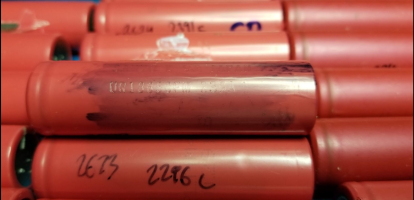



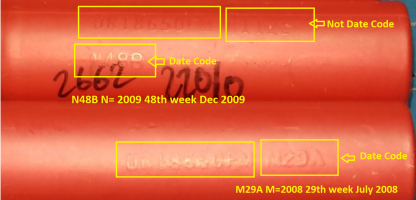
These particular cells are UR18650FM 2500mAh cells they are defiantly old but the ones I have are from 2008 to 2013 with a few of them actually still testing well.There are basically 3 different reds (shades) of the UR18650FM that I have found. One is a bit more pinkish, one a nice deep red, and one more of a translucent clear tinted red wrapper. You can definitely see the labeling on the can of the cell very well with this wrapper. Unfortunately the picture does not due the translucent wrapper justice as it is the very right one in the picture.

I have yet to encounter a heater but as these cells have already gone through a previous testing cycle I do not anticipate any.
One note as Panasonic has bought Sanyo some of their cells are still using their heatshrink and marking machinery here is an example of their NCR18650GA
Barely readable but there.

And here is the updated Lab
Wolf
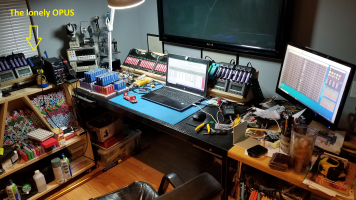
I think the cylindrical Li-Ion cells are here to stay for quite some time. Just the scooter and power tool industries alone will continue to use them for the foreseeable future as they are compact and deliver substantial power for a reasonable cost.
As far as I am concerned till personal fusion generators become a reality we will be using some form of energy storage for quite some time.
Since I have finished my conservatively speaking ≈30kWh powerwall, and just waiting for the last lexan sides for the packs to finish hooking my 4th and last 14s80p battery to the build. Also this is not a high solar time of the year in the north east of the americas so I have delved back into cell study and analysis of the Li-Ion 18650 cell. I have gobs of leftover tested and untested cells, battery packs of all kinds medical, power tools and yea laptop packs.
I have stepped up my game as far as cell testing equipment with 2 Megacell chargers and 5 SKYRC MC3000 and one lonely OPUS just for sentimental reasons.
By the way the fan Mod on the OPUS is highly recommended if you are going to C/D/C cells at 1A. The cells will stay cool and the tester will not overheat causing it to pause during the cycle extending the test time.

The forum title is Li-ion cell recycling and testing procedures and I am posting this thread in this Forum to share some of my findings with you in hopes to help some of you with your harvesting endeavors.
As of this writing I have retested 544 of the original 6225 cells that I started with in Dec. 2018 and ran through Aug. 2019.
The first of hopefully many hints, tips and discoveries that I will share with you is cell markings. Now Samsung, LG, Panasonic, Sony, and Sanyo all have their product markings and date codes as they are the major players and those are the ones I will concentrate on. Today I will concentrate on the Sanyo as it has baffled me and many others. Most all Sanyo cells have a red wrapper and have an identifying insulator ring at the positive terminal. There is an Orange w/purple insulator ring and Purple w/yellow insulator ring style wrapper also but it is only for the UR18650ZT (2650 mAh) and UR18650ZTA (2620mAh) respectively.
We have all complained that there are no markings on these batteries yet I am here to tell you that every one of them has identification marks on them. At least the real ones. You basically need a hubble telescope and a very good flashlight to find the numbers but believe me they are there.
All Sanyo cells start out with UR18650 and then the identifier. One technique I used to use to find the cell number is to use a fat sharpie and quickly run it over the area which looked like it had numbers / letters on it and then quickly use a paper towel and rub the area hoping the recessed numbers would pop up.
Sometimes it was very successful other times it was not. I now use the magnifier on my cell phone and boy do they show up nicely. Here are some of the pictures. Also a description of the way the date code works. If there is an R with 4 numbers on the right of the cell part number that is not the date code. I have no idea what it is. If there is an R with 4 numbers (most likely will be R1122) then usually below the part number on the left side you will find the date code. It will always be a letter 2 numbers and a letter. If you have a letter 2 numbers and a letter to the right of the part number than that is your date code.





These particular cells are UR18650FM 2500mAh cells they are defiantly old but the ones I have are from 2008 to 2013 with a few of them actually still testing well.There are basically 3 different reds (shades) of the UR18650FM that I have found. One is a bit more pinkish, one a nice deep red, and one more of a translucent clear tinted red wrapper. You can definitely see the labeling on the can of the cell very well with this wrapper. Unfortunately the picture does not due the translucent wrapper justice as it is the very right one in the picture.

I have yet to encounter a heater but as these cells have already gone through a previous testing cycle I do not anticipate any.
One note as Panasonic has bought Sanyo some of their cells are still using their heatshrink and marking machinery here is an example of their NCR18650GA
Barely readable but there.

And here is the updated Lab
Wolf

Last edited:





